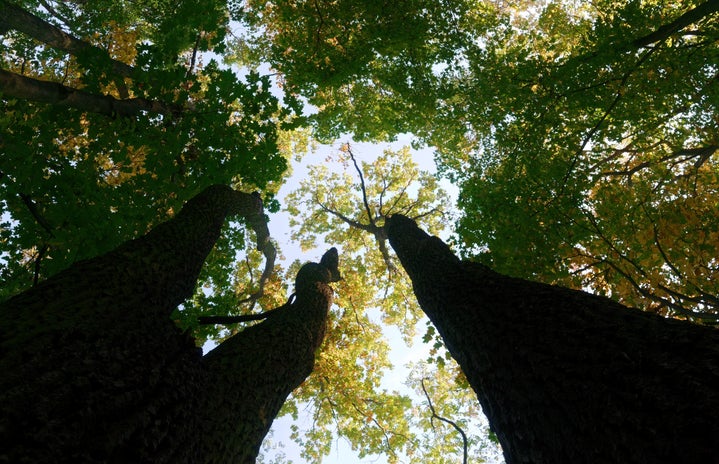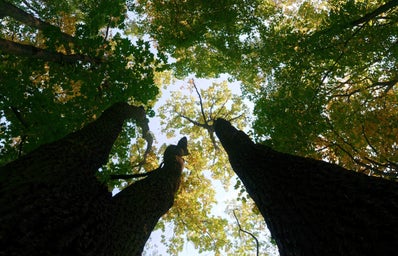Fall at SBU means every time you step outside, you have a good chance of seeing the campus squirrels engaging in their typical squirrel shenanigans. Though they usually exhibit unsurprising behaviors like scurrying up trees and collecting nuts, there is one thing that makes the St. Bonaventure squirrels remarkable – the high proportion of these critters with black pelts.
Black-pelted squirrels are a melanistic morph of the Eastern Grey Squirrel, a species common from the Midwest to the East Coast of the U.S. Before European colonization of the Americas, the East Coast was covered in dense old growth forests that served as the primary habitat for the Eastern Grey Squirrel. Because of this, the melanistic morph was better suited for camouflage and was more abundant than the light grey pelts we are familiar with today.
However, due to the thinning of forests after colonization, the grey-pelted squirrels gained evolutionary fitness as they were better able to camouflage in secondary growth forests. They increased in abundance, and now, are the primary morph of Eastern Grey Squirrel.
It’s slightly jarring, then, to see the black fur phenotype in the majority of SBU squirrels; especially since this trend discontinues before Olean, NY, only 2 miles away. What makes our campus such an advantageous niche for black squirrels?
One selective pressure that squirrels face in our area is lake effect snow and cold winter temperatures from the nearby Lake Erie. Black squirrels are better suited to surviving cold winters, because their dark fur captures and retains heat from light more efficiently than light fur. However, if this was the main selective pressure squirrels faced in Cattaraugus County, we would see a higher abundance of black squirrels off campus. Therefore, the main selective pressures on campus must be different from the pressures faced by squirrels off campus.
do Squirrels want to be Seen?
As we established, light-colored squirrels are much better than darker ones at camouflaging in today’s secondary growth forests. According to Gibbs et al., however, black squirrels are significantly more conspicuous against in urban environments as well, because they live amidst grey concrete and pavement. Therefore, the relative abundance of dark-pelted squirrels comes down to whether it is more advantageous to the squirrels to be seen, or to camouflage.
The main natural predators for Eastern Grey Squirrels in Western New York are foxes, coyotes, raccoons, birds of prey, and snakes. Camouflage is an important advantage for squirrels in evading these predators. However, due to the less social nature of these animals in comparison to squirrels, they do not frequent the same highly traversed areas on campus. Because of this, predation is a less significant selective pressure and the grey fur phenotype is not as strongly selected for.
SBU campus, like any college campus, is an area that experiences a disproportionately high amount of student driving. Students driving on campus are more likely to be younger and more inexperienced than a standard sample of drivers. This creates an additional risk for campus squirrels – becoming road kill. The selective pressure created by student driving likely selects for the melanistic morph of the squirrels, which would increase their visibility on the road.
Additionally, one can reasonably assume that students would be more likely to feed the darker, more conspicuous squirrels on campus. I, for one, have often found myself tossing a morsel or two to a bushy-tailed critter on my way back from the Hickey. The increased likelihood of students to notice and subsequently feed a black squirrel could provide the advantage of easier food acquisition.
So, we end up with the St. Bonaventure campus as a sort of safe haven for the melanistic morph of the Eastern Grey Squirrel. Not only are the natural predators that would easily spot them in a secondary growth forest less common; but their dark fur keeps them warmer in the winter. They’re also more visible to students, and therefore more likely to be fed and less likely to meet their end under the tires of someone’s mom’s Subaru.



